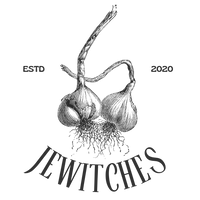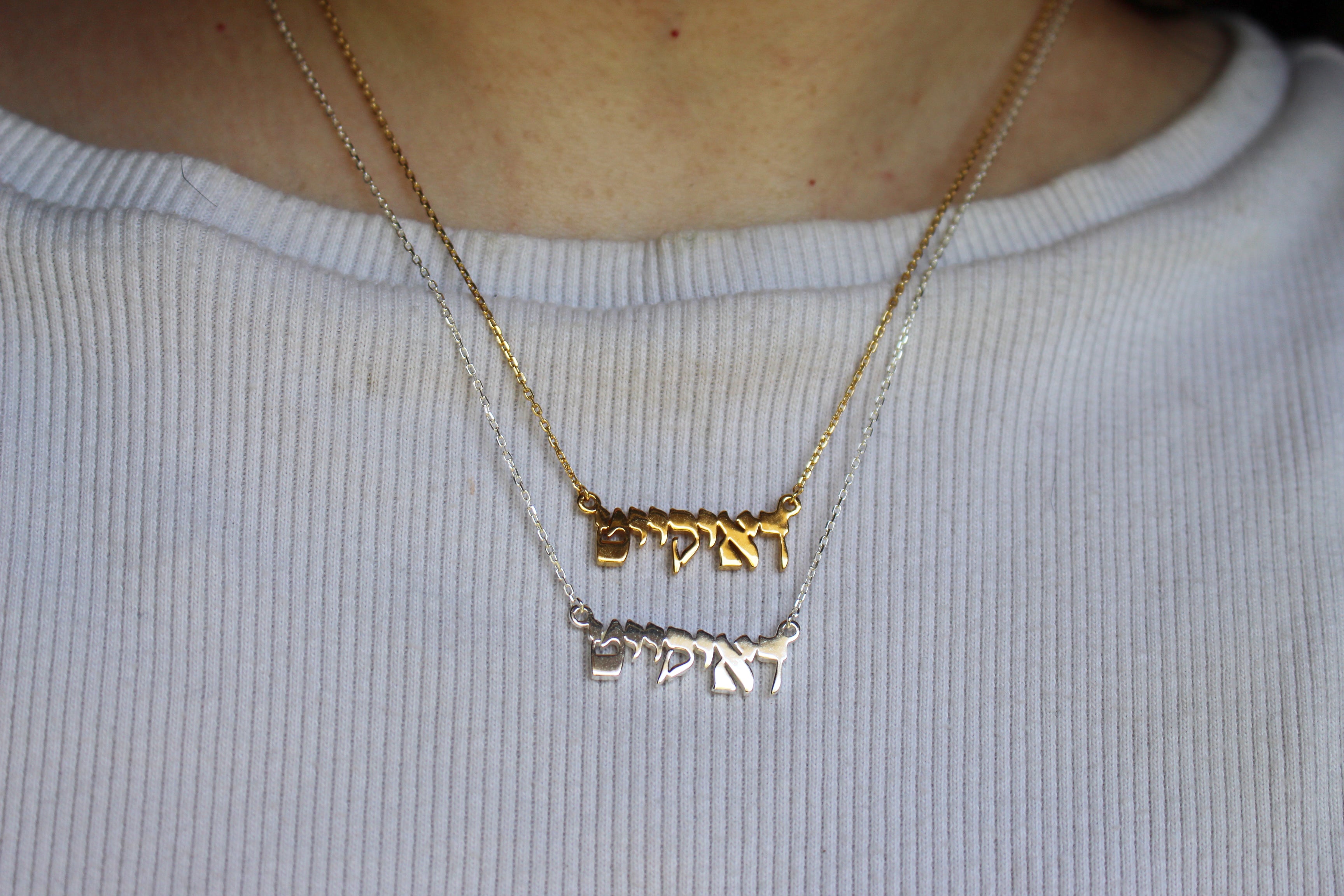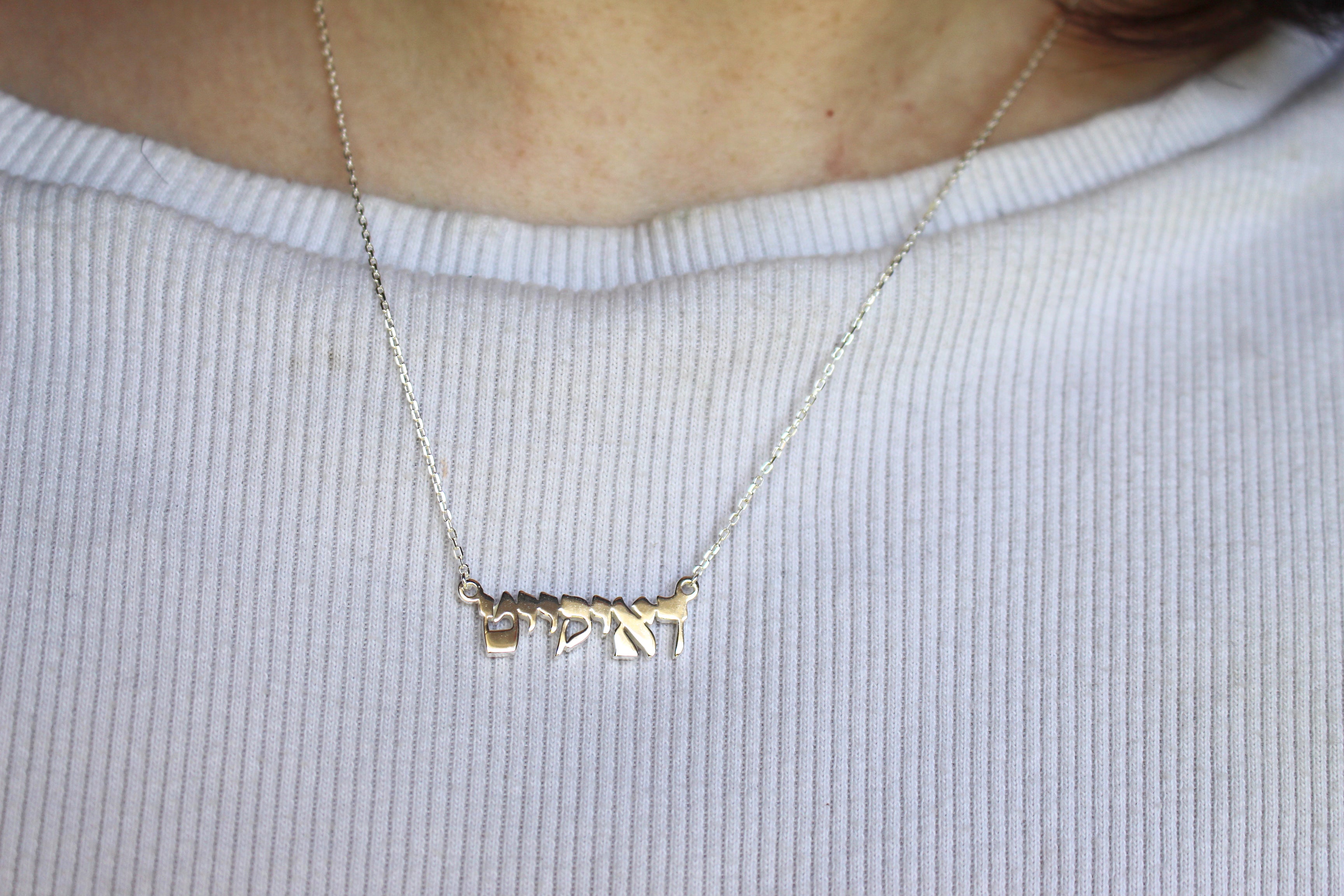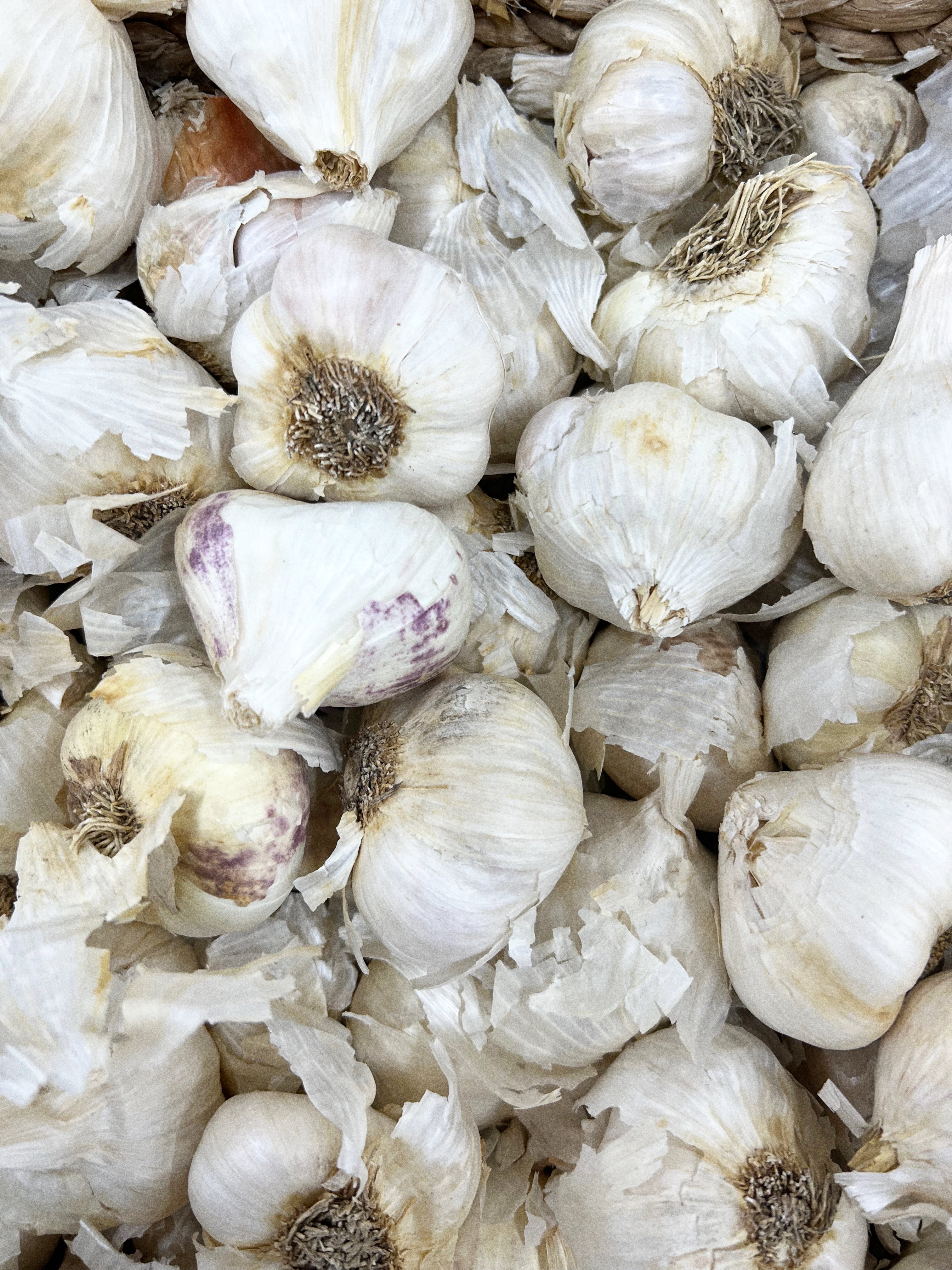If there were one single item of food to represent Jews, in our humble opinion, it would not be bagels or bialys or bourekas, cholent or challah, brisket or couscous, but something far more simple: We offer up the quintessential Jewish staple of garlic.
From the time of the Torah, we have cemented our love of garlic, lamenting in our wanderings how we miss her delectable taste:
We remember the fish that we used to eat free in Egypt, the cucumbers, the melons, the leeks, the onions, and the garlic. (Numbers 11:5)
With documented evidence of cultivation and use as far back of 4500 years, garlic is by no means a new culinary favorite.⁵ But it was more than just a flavor booster for Jewish communities around the world.
Indeed, "[t]he first sonnet ever written in Hebrew was in praise of these vegetables. It was part of a work, the Mabbarot (Compositions), written by the greatest Hebrew poet of medieval Italy, Immanuel ben Solomon of Rome, called Manoello (1260-c.1328)." This is the translation by "Allen Mandelbaum, which appeared in the American Jewish periodical Commentary in 1951:" ¹
From the Hungry, Praise
I gaze on manna and on quail,
but voices warn, "Approach not here";
the banquet now is but a dream bereft the grandeur of my soul.
For heart's redeemer is the onion, onion, garlic, leek, my peace, upon my head fit coronal, and for my soul-ills, unction.
Garlic is earth's stag and blossom,
Grace did bear him, Glory robed him, over him -the Great Bear and her sons.
And wheel in wheel, like heaven's spheres, the onion's skin; the leek, Elisha's wand. in wondrous miracles.¹
But garlic was not only a feature within our romantic literature, featuring heavily within the discussions of the great Rabbis and Sages, who understood the deep power this plant held.
"The Sages taught in a baraita that five matters were stated with regard to garlic: It satisfies; it warms the body; it causes one's countenance to shine; it increases one's sperm, and it kills parasites that are in the intestines. And some say that it also instills love into those who eat it & removes jealousy from them." Bava Kamma 82a:11
"The Gemara explains the next of the ordinances that Ezra the Scribe ordained: And that one should eat garlic Shabbat eve. This is due to the fact that garlic enhances sexual potency, & Friday night is an appropriate time for conjugal relations." Bava Kamma 82a:10
The warming nature of garlic was included in foods encouraged for sexual potency, hence "garlic is called a Sabbath delight, with the same sexual implications of the word delight as in the sexually suggestive song "Afternoon Delight."" ¹² Sefer Hasidim, a 13th-century text, teaches that "roasted garlic, eaten warm, [is] a remedy against impotence!" ¹³
It was also well understood by the rabbis to be a curative substance:
"With regard to the remedy for pain in one's teeth [lekhakha], Rabba bar Rav Huna said: Let him bring an individual garlic that grew as a single clove and grind it with oil and salt. And let him place it on the thumbnail of the side that hurts him, and let him surround it with a rim [gedanpa] of dough. And he should take care that it does not touch his flesh because it is harmful and can cause boils." Gittin69a
Perhaps its possible medical purpose was the reason behind this declaration:
"With regard to a mortar, if it has garlic in it, one may move it on Shabbat, and if not, one may not move it on Shabbat." (Shabbat 123b:12)
It wasn't just mortars that could be moved with garlic in them...
"One may go out with a twig in his teeth or in his shoe to the public domain. But if it falls out, he should not replace [it]. And with padding or a sponge over a wound, so long as he does not tie a string or a cord over it. For a string and a cord have [a distinct] importance to him and are not useful for the wound. And he may go out with a garlic peel or an onion peel upon a wound or a dressing on top of a wound, and he may tie it and untie it on Shabbat. And with a bandage or an emollient or a plaster on top of a wound; and with a coin on top of a callus, and with a locust's egg, a fox's tooth and the nail of one crucified (which were understood to have medicinal properties). And with anything that we drape for healing—and that is when the physicians say it is useful." Mishneh Torah 19:13
"Shall one who ate garlic and his breath smells, return and eat garlic again, so that his breath should continue smelling?" Babylonian Talmud, Berakhot 51a, as a rabbinic idiom for "two wrongs do not make a right."
However, the perceived plague of stinky garlic breath was not well tolerated by all, as Rabbi Judah the Patriarch once asked a student to leave his classroom for smelling of garlic!
Rabbi Yehuda HaNasi was sitting and teaching, and he smelled the odor of garlic. Rabbi Yehuda HaNasi was very sensitive and could not tolerate this odor. He said: Whoever ate garlic should leave. Rabbi Ḥiyya stood up and left. Out of respect for Rabbi Ḥiyya, all of those in attendance stood up and left. The next day, in the morning, Rabbi Shimon, son of Rabbi Yehuda HaNasi, found Rabbi Ḥiyya, and he said to him: Are you the one who disturbed my father by coming to the lecture with the foul smell of garlic? Rabbi Ḥiyya said to him: There should not be such behavior among the Jewish people. I would not do such a thing, but I assumed the blame and left so that the one who did so would not be embarrassed. (Sanhredin 11a)
There is a reason that rabbinical discussion regarding garlic was so intense, as according to food historian, rabbi, and chef, Gil Marks, "Historically, the addition of garlic was among the typical Jewish touches that enhanced local dishes. In many cultures, the presence of garlic marked a dish as Jewish." ⁶
Jews were simply associated with garlic, so much so that antisemitic imagery around Jews featured the bulbs prominently, along with other antisemitic red flags like bags of money, gold coins, grotesque features, and general caricatures of Jews.





But the association wasn't merely in images only: Jews were known as 'garlic eaters', both as a self-applied term [The rabbis of the Mishnah understood Jewish garlic consumption to be so identifiable that they referred to Jews as "garlic eaters."]" ¹²
In what is now Germany, the towns of Speyer, Worms, and Mainz each boasted hearty Jewish populations and were known by the acronym "Shum", which is the Hebrew word for garlic!¹² Interestingly, the above image of the man carrying a money purse in one hand and garlic in the other originates within Worms.
During the Spanish Inquisition, established as the Tribunal of the Holy Office of the Inquisition, Jews were forced under threat of death to convert to Catholicism or flee their homes in order to escape. Identifying Jews and conversos (Jews living in secret after publicly converting to Catholicism) was paramount to Inquisitors, and food played a significant role in 'weeding out' the Jews who remained in Spain. According to some scholars, the scent of garlic in a home was enough to warrant torture or even death.
Andres Bernaldez was chaplain to the Archbishop of Seville in Spain during the Inquisition and wrote Historia de los reyes católicos D. Fernando y Doña Isabel, published in 1870.
"Just as heretics and Jews have always fled from Christian doctrines, so they have always fled from Christian customs," the priest wrote; "They...never lose the Jewish habit of eating garbage of onions & garlic fried in oil…" ⁶
Another translation offers: "You must know that the customs of the common people before the Inquisition were nothing more nor less than those of the stinking Jews themselves, and this caused the continuous conversation that they had with them; they were so greedy and gluttonous that they never lost the Jewish custom of eating garbage, and olives, onion and garlic fried with oil, and the meat was cooked with oil, and they used to put it instead of bacon; And oil with meat is something that makes the breath smell very bad; and thus their houses and doors smelled very bad to those foods; and they themselves had the smell of the Jews because of the foods and not being baptized." ⁷
This idea that Jews had a particularly foul odor known only to them is known as foetor judaicus and was extraordinarily common during the Medieval period.⁸
Christmas may be a beloved holiday for many, but historically, it was a time of horrific violence against Jews. Enlivened by their celebrations of their Lord, Christians would harangue, harass, and attack Jews with renewed vigor. Aside from interpersonal acts of violence, the systemic violence against Jews continued for centuries; for example, "in 1836 the Jewish community of Rome sent a letter to Pope Gregory XVI begging him to stop the abuse of the Jewish community on Christmas, in which rabbis were forced to don clownish outfits and run through the streets while spectators threw things at them. Pope Gregory refused to intervene." ⁴
This led to the creation of "Nittel Nacht", a quasi-celebration for European Jews that forced them to stay indoors, hidden away from the violence of celebrating Christians. "Jews in Alsace, Galicia and Western Poland used Vay Nahcht (Woe Night), a name parodying the German Wei Nahchten (Holy Night)" ³
Researcher Rebecca Scharbach Wollenberg categorizes Nittel Nacht, in their research, The Ghost in the Privy: The Origins of Nittel Nacht and Modes of Cultural Exchange, as a "cluster of Jewish observances carried out on Christmas Eve" .²
"From the early modern period onwards, many European Jews marked the arrival of the Christmas holiday by putting aside their holy books, refraining from sexual relations, consuming garlic, staying up late, and holding rowdy communal gatherings (often centered on card playing)." ²
The reasoning was that as Jesus walked the earth again on the night of Christmas, Jews would ward him off using various methods, including the most common and widely available anti-demonic herb on hand: garlic.
"Eating garlic on Christmas Eve was one way to signal resistance to that day, both against their dominant Christian culture and as a means of spiritual/ literal protection, since garlic was understood as an apotropaic that warded off demons and spirits." ¹²
For Jewish communities across the Diaspora, garlic played its role well as both an apotropaic [having the power to avert evil influences or bad luck] and prophylactic [intended to prevent disease], as within the spiritual ecosystem of Judaism, evil forces were entirely capable of causing illness.
Garlic was consumed, hung, grown, and placed around ones home for various reasons, including hanging in windows as a means of warding off the plague.⁹ Among Jews of Eastern Europe, it was believed that "[a]nyone facing the prospect of spending the night in a field ought to wear a bulb of garlic around their neck for safety".
Commonly, garlic was an ingredient used to protect children: Bulbs were placed beneath the pillows of infants before circumcision in order to keep them safe. ⁹ In 13th century Spain, many Jews followed the custom of slaughtering an old cock after the birth of a son, removing its head with its feathers and hanging it with garlic at the entrance of the house.¹⁰ "One woman told us that the clove of garlic was placed "in the breast of the new mother" and she further explained that the garlic was hung round the neck and between the breasts of the new mother" ¹¹
"Sometimes mothers would simply wrap a clove of garlic, a piece of amber or some salt in a handkerchief, or sew it in their child's clothing....Items carried in the pockets could be just as effective" .⁹ These practices were shared between Jews of the Diaspora, "Some time ago, they carried a bulsika [little sack] with some salt, garlic, and a blue bead" ¹¹
Among Eastern European Jews, the crying of a baby was seen as potentially caused by unclean forces, and therefore, a ritualistic approach to soothing was taken, like for example "bathing in a stock made from onions, garlic, and a comb, to be poured out at a crossroads after the procedure". ⁹
"As Clara Danon of Zeniça, Bosnia, told us, "Rue is placed thus [pointing to the ear], garlic under the pillow so that it couldn't be seen....Julie Alajef of Rusçuk, Bulgaria, recalled, "garlic they put under the pillow the for evil eye. Sometimes they would tie blue chains" by stringing garlic together with blue beads.....Garlic they put in the pocket, in the house, on the doors. Babies when they were born, under the pillows. And they used to put blue beads....As another person said, "With a piece of garlic in the pocket and blue beads pinned to the shirt, a child would be protected from the evil eye from birth until he became a big boy". ¹¹
As part of the spiritual ecosystem, the evil eye played an important role, as did its cure: garlic. So much so that it inspired an incantation in Ladino, the language of Sefardic Jews, '"Al ajo ke se le vaiga! Let it [the evil eye] go to the garlic!" ¹¹
Various rituals to remove the evil eye included garlic in its list of ingredients, including preparing the garlic "while reciting a conjuration based on the dialogue between the prophet Elijah and the she-demon Lilith". ⁹
"Garlic is for evil eye, and ruda is for evil! They would put a piece of it [in clothing] and hang it [in the house]" ¹¹
So, according to the wisdom of our ancestors, the cure [to pretty much anything] is garlic! Just remember: Garlic peeled and left out overnight is believed to be unfit for consumption due to the forces that stir in the night.
This is such a strong belief that the rabbis declare that if you die from it, it will be your own fault!
"There are five actions with regard to which one who performs them is held liable for his own life, and his blood is upon his own head, i.e., he bears responsibility for his own demise. They are as follows: One who eats peeled garlic or a peeled onion or a peeled egg, and one who drinks diluted drinks; all these are referring to items only when they were left overnight." Nidda17a
However, during certain practices by Sefardic Jews, garlic [and other odorous foods like onions, spices, and fish], was forbidden during the rituals allotted time. For more information, Ritual Medical Lore of Sephardi Woman: Sweetening the Spirits, Healing the Sick by Rosemary Lévy Zumwalt and Isaac Jack Lévy goes into detail.
- The Book of Jewish Food, An Odyssey from Samarkand to New York: A Cookbook, Claudia Roden
- The Ghost in the Privy: The Origins of Nittel Nacht and Modes of Cultural Exchange. Rebecca Scharbach Wollenberg
- https://www.myjewishlearning.com/article/eastern-european-jews-christmas/
- https://aish.com/black-christmas-december-25-in-jewish-history/
- https://www.ars.usda.gov/midwest-area/madison-wi/vegetable-crops-research/docs/simon-garlic-origins/
- https://aish.com/garlic-and-jews-6-little-known-jewish-facts/
- https://archive.org/details/historiadelosrey00bern/page/126/mode/2up?q=ajos
- "The Dehumanization and Demonization of the Medieval Jews." Medieval Antisemitism?, by François Soyer, Arc Humanities Press, Leeds, 2019, pp. 45–66. JSTOR
- A Frog Under the Tongue: Jewish Folk Medicine in Eastern Europe, Marek Tuszewicki
- Magicians, Theologians, and Doctors. H. Jacob Zimmels
- Ritual Medical Lore of Sephardi Woman: Sweetening the Spirits, Healing the Sick by Rosemary Lévy Zumwalt and Isaac Jack Lévy
- Rosenblum, Jordan D.. "5. A Brief History of Jews and Garlic". Feasting and Fasting: The History and Ethics of Jewish Food, edited by Aaron S. Gross, Jody Myers and Jordan D. Rosenblum,
- 'As the Jews Like to Eat Garlick'. Garlic in Christian-Jewish Polemical Discourse in Early Modern Germany", in: Leonard J. Greenspoon, Ronald A. Simkins and Gerald Shapiro (eds.), Food and Judaism (=Studies in Jewish Civilization 15).
Images:
https://collections.ushmm.org/search/catalog/irn538169
https://collections.ushmm.org/search/catalog/irn537081
https://collections.ushmm.org/search/catalog/irn539280






